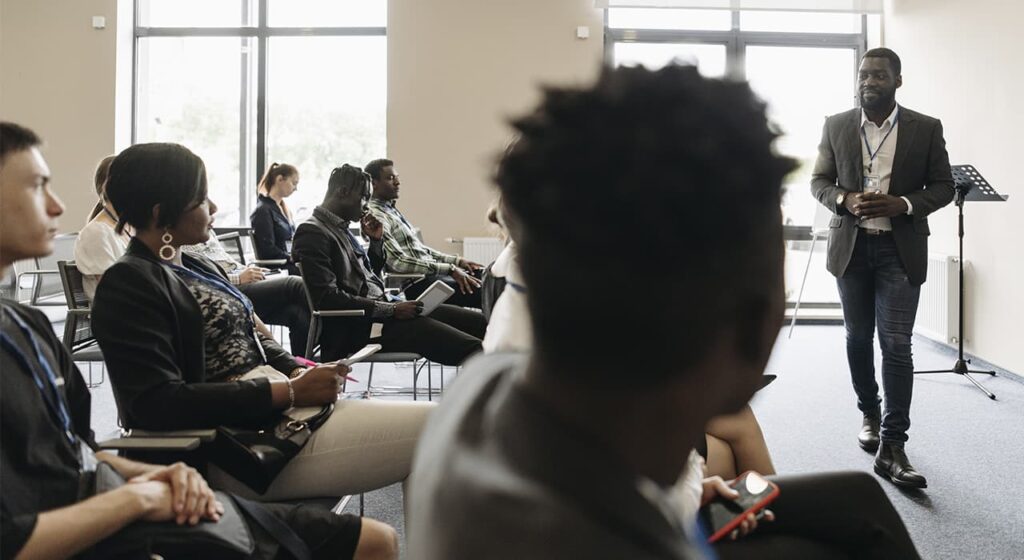You will need: a projector with a screen or LED screen, a microphone for the speaker, one or two radio microphones for questions, a laptop, a clicker-pointer, sound equipment, and a video camera. Such equipment should be in every room at the conference.
When you first meet the venue, check the laptops, microphones, speakers, projector or screen a few days before the event and on the morning of the conference.
Negotiate with the venue who will be responsible for the equipment. Meet with that person in advance to test, and arrange for a pre-event run-through. If the venue does not provide its own staff, hire a specialist and run with him in advance.
Provide free Wi-Fi. If the venue has its own wifi, test to see if it can handle the day of the event. If the venue does not have such a resource, take care of your own equipment. Test the equipment at the venue. Keep in mind that signal quality degrades when there are a lot of people.
Set up a charging station or prepare an area where guests can charge their phones. Stock up on several types of chargers.
Save the speakers’ presentations on a laptop, on a flash drive, and in cloud storage. Check with the speaker the day before the event to see if any changes have been made to the presentation and if there is an updated version. On the day of the event, review with the speaker his slides again before the presentation.
Record videos of the speeches. They will be useful both for the organizers themselves for the future, and will be of interest to those who could not attend the event but would like to hear your speakers’ reports.
To make sure the sound in the video is clearly distinguishable and doesn’t suffer from extraneous noise, use a cockpit or behind-the-camera microphones. A standard in-camera microphone isn’t enough. If you record video for later sale, contact a professional videographer. With special equipment you will get decent sound quality.



